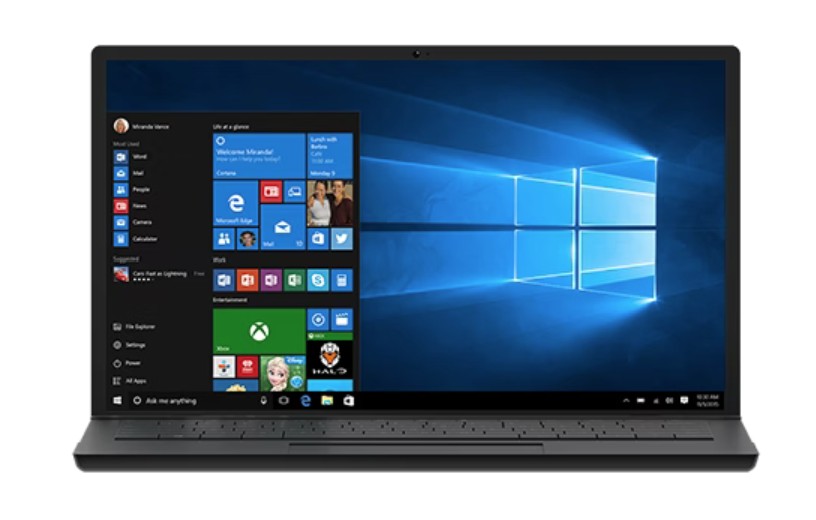Windows 10 EOL (end of life) options include risking using a vastly insecure operating system, upgrading if you can, or buying a new PC/laptop. There are no half measures.
First, a few facts
Windows 10
- Launched on 29 July 2015
- End of Life (updates and security patches) will finish on 14 October 2025. The latest version is 22H2.
- You could upgrade almost any Windows XP (2001), Vista (2007), or 8 (2012) PC for free. Meaning that even very old and insecure ‘metal’ was upgraded and is way past its use-by date.
- It was a new Windows, focusing on a better user interface and increased security.
- Over its life, some 4070 CVEs (Common Vulnerabilities and Exposures) were identified. There has been a quantum increase over the past few years as cybercriminals using AI found new exploits.
Windows 11
- Launched 5 October 2021.
- ‘The last version of Windows’ (meaning it has regular upgrades and patches. The latest version is 24H2.
- It was for Intel 8th Generation Core (2017). AMD Ryzen 2nd generation (2018) or Qualcomm SD850 (2018). These have a UEFI (BIOS) and Trusted Platform (TPM) 2.0 module to allow hardware/operating system security not available in earlier Windows.
- Total CVEs are 600 – way more secure than Windows 10
- Other minimum upgrade conditions included 4GB RAM, a 1GHz 2-core CPU, 64GB storage, an 8-bit 720p display, and an internet connection to verify these conditions during setup.
- You can verify free upgrade eligibility Download the PC Health Check app.
If your PC cannot be upgraded
You can continue to use the PC until it dies. If you run a basic paid Antivirus/Malware program like Trend Micro Maximum Security or Norton Antivirus Plus and use a VPN (read Do you need a VPN? (Virtual Private Network guide)), you will be safe against most attacks. However, starting 10 October, you may be vulnerable to new CVE discoveries.
Read The right Windows laptop for you. Save money – avoid upselling (2025 computer guide)
If your PC can be
Windows Update will show the upgrade and automatically use your Windows 10 licence key. There is only one problem with this upgrade: Any pre-existing hardware or software issues may still exist. Some very old apps and hardware (serial and parallel port connected) may not work. Some esoteric hardware may lack Windows 11 drivers. This method allows you to roll back to Windows 10.
The best method is a clean install of Windows 11. That is only for the tech-savvy (read How to clean install Windows 10/11). You must reinstall all your apps, data, and settings—a clean start.
Read Upgrade hints for older PCs – save money and get Windows 11 for free (guide)
CyberShack’s view: Windows 10 EOL is long overdue
Imagine the responsibility of ensuring Windows works on potentially up to 25-year-old hardware. Windows 10 could do that, and it was a mammoth responsibility for Microsoft.
Windows 11 supports hardware from 2017. Provided the cybercriminals don’t find a way to circumvent UEFI and TPM 2.0, it should last many more years before the next line in the sand.
While Microsoft will continue to offer the free Defender (read Is Windows Security good enough to foil the bad guys?) it won’t cover CVEs. Windows 10 devices are still serviceable, but you must rely on paid third-party AV/Malware software and VPNs for protection.
Snake Oil
Don’t believe any clickbait headlines that infer old metal can bypass Windows 11 TPM 2.0 requirements. It is all bovine excrement. Some registry hacks allow you to install an old 22H2 version, but Windows Update does not upgrade these.



2 comments
dani
I have a DELL Inspiron 17 – 5000 Series – 5767
I ran a PC health check and the results say
– My laptop does not meet Windows 11 system requirements
– Because the processor isn’t currently supported for Windows 11
I currently run a PAID McAfee anti-virus
I have been told many things from people such as –
– If I upgrade the processor then the other components may not work
– If I continue to use the laptop as is and use the internet then I am at risk from hacks etc
My questions are –
– Are the above true ?
– Is my only choice a brand new PC ?
Ray Shaw
The Dell is past its Windows 11 use-by date. You can’t upgrade the motherboard or processor in this laptop. It is fine to use with McAfee until the device reaches its end of life. This means that you are relying on McAfee for protection instead of the built-in hardware protection that Windows 11 has. If it’s working well, get a few more years of life out of it.